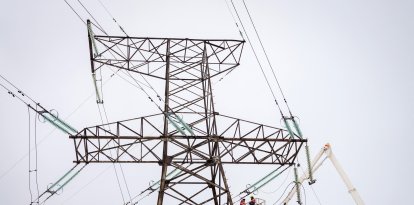AI shows conservative women are happier and more attractive
The research analyzed how artificial intelligence predicts ideology from facial features. The experts used 3,323 photos of local Danish politicians.

AI shows conservative women are happier and more attractive
Can you tell someone’s ideology from their face? Does it help if they have tattoos or earrings? Perhaps it would serve you to hear them speak, as asking some questions will surely come in handy. These eyeball predictions are proven to have "some degree of accuracy" in identifying everything from ideological preferences to intelligence and sexual orientation.
That is according to the academic article titled “Using deep learning to predict ideology from facial photographs: expressions, beauty, and extra-facial information,” published in the scientific journal Nature earlier this year. Artificial intelligence, however, proved to have far surpassed human predictive ability.
The study, conducted by three Nordic academics, set out to analyze how deep learning technology can predict people's ideology. The authors claim that it is proven to be accurate.
They used a pre-existing artificial intelligence called a "convolutional neural network (CNN)" but trained it to serve the objectives of the study. CNN analyzes images, detecting patterns and learning abstract features rather than simply noting visible features, such as a large nose.
This AI analyzed photographs of 3,323 local Danish politicians. The result: 61% accuracy in associating faces with ideological preference. It was as successful analyzing portraits of women as of men. But where did the AI set its sights?
"Model-predicted ideology correlated with aspects of both facial expressions (happiness vs neutrality) and morphology (specifically, attractiveness in females)," explain researchers Stig Hebbelstrup Rye Rasmussen, Steven Ludeke and Robert Klemmensen.
Smile, you are right-wing
From the photographs that the AI identified as most likely to be left- or right-wing, the academics generated four “facial prototypes.” That is, how the right-wing man, the left-wing man, the right-wing woman and the left-wing woman look:

"We see that both male and female right-wing composites appeared happier than their left-wing counterparts," the experts noted after observing the facial prototypes. In addition:
When considering morphology, those women identified as conservative by the technology were found to have "high attractiveness scores." In the case of men, there was no obvious correlation.
"We also found that expressing happiness is associated with conservatism for both genders," the study explains, adding that "among women contempt was non-trivially correlated with a predicted probability of left-wing ideology."
You dress the way you vote
Another notable, albeit accidental, conclusion of the study was that it is not only the face that matters, but also the clothes.
While in looking at women, CNN limited itself to their facial features, in the case of men it automatically considered elements beyond the face. Especially, if the person was wearing a collared shirt.
By taking this "non-facial" information into account, the AI was more accurate: 65% including clothes versus 61% without. However, the researchers cropped those photographs again to leave only the facial features, which was their original object of study.
Possible risks
"Our results confirmed the threat to privacy posed by deep learning approaches," say the study authors.
That is why, they argue, it is essential to know how such a technology predicts a person's ideological preferences, and even to "help to illuminate the origins of ideological differences." In the case of job searches:
However, employability may be less of a risk. Countries such as China and Iran are reportedly brimming with facial recognition cameras in public spaces that could be used to detect dissidents.
The CCTV (closed-circuit cameras) installed in the Asian country, which has the most in the world, can now even alarm abnormal activity to anticipate possible disturbances.
According to a Washington Post report, these surveillance devices have the ability to associate a person's image with their name, organization they are part of, gender, age, ethnicity (including whether or not they are Uyghur) and date of birth.
A senior Iranian official, meanwhile, claimed that cameras in public spaces could identify women not wearing hijab, according to Wired. Thus, those who violate clothing laws could be easily detected, identified and punished. What if, in addition, they had the ability to detect ideological dissent by a smile?
This identification technology could also be used in private spaces. With each passing year, more cameras are being installed inside homes by homeowners, and a recent study revealed that Americans are increasingly comfortable with the idea of the government installing these devices in their homes. A third of Generation Z was in favor.
Something similar could be said about social media, thanks to which there are countless photos of people online and for which there have been numerous privacy issues or accusations of political servitude.

























